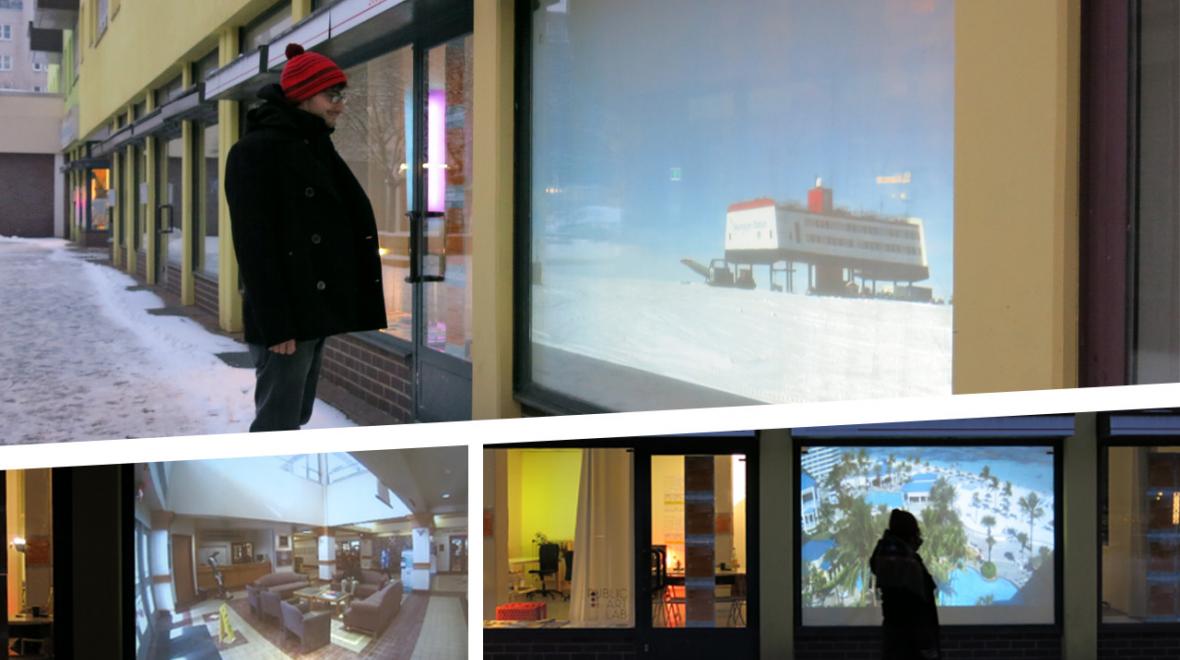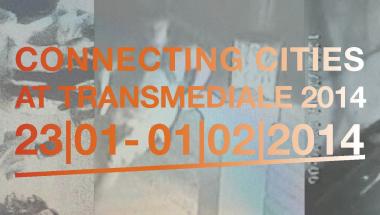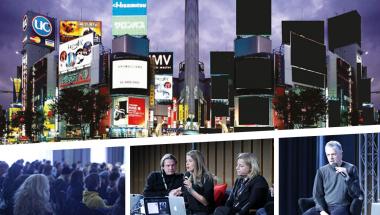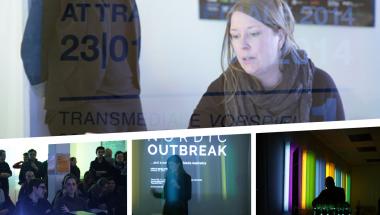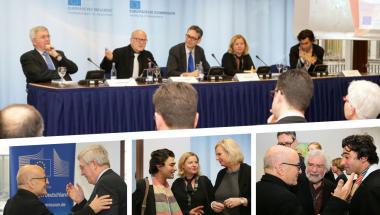Telepresent Gallery
The Urban Media Kitchen on the 23 January 2014 opened the ‘Telepresent Gallery’, a live webstream projection by Public Art Lab. The ‘Telepresent Gallery’ allowed the public in Wedding to zoom into other sceneries and see the world from the perspective of a surveillance camera. In contrast to edited videomaterial the ‘Telepresent Gallery’ solely uses video sniffed footage; material that was captured from the live feed of a surveillance camera (Closed-circuit television camera, CCTV).
Nowadays our CCTV coverage has become very comprehensive, millions of cameras cover almost every inch of our planet. The spy cams are omnipresent yet integrated and invisible. The footage however is kept under cover in operator rooms and only published if a crime or something extraordinary happens. As a reaction to the increasing presence of video surveillance, we are interested to explore the different types of surveillance cameras and their aesthetic impact as a large scale projection. The ‘Telepresent Gallery’ creates a narrative with this apparently arbitrary material and transfers it to a large-scale public screen. Almost all sceneries are judged film worthy, as the purposes behind are manifold and range from surveillance (parking lots, public spaces), over to touristic purposes (panoramic city skyline, hotel resorts) to selfies and curiosities (private living rooms, pet cams). Live video footage from broiler farms to server rooms is continuously recorded and becomes part of an aesthetic control-topology, which has its own language. The cameras stand sentry over so many alleys and street corners that we have gotten accustomed to their omnipresent gaze. Even if we are the protagonists we have moved away from the performativity that we usually display in the presence of a visual recording devices. The initial surveillance residence/state of panic about loss of control and privacy has mostly been substituted by a numbness/insensibility. Similarly to Eames’ The Powers of Ten Public Art Lab creates thematic constellations that lead to a cinematic dramaturgy: from the global to the local, from the macro to microcosm from public to private. The act of publishing the output of the CCTV cameras in public space enhanced the possibilities of interaction and cultural exchange, as it connects remote sceneries and their societies. The question whether what we see is reality or fiction surfaces, the aesthetic aspect of telepresent control emerges and the viewer is drawn into a state of contemplation.
Find more pictures on our Flickr page.
Photograph:
© Public Art Lab

